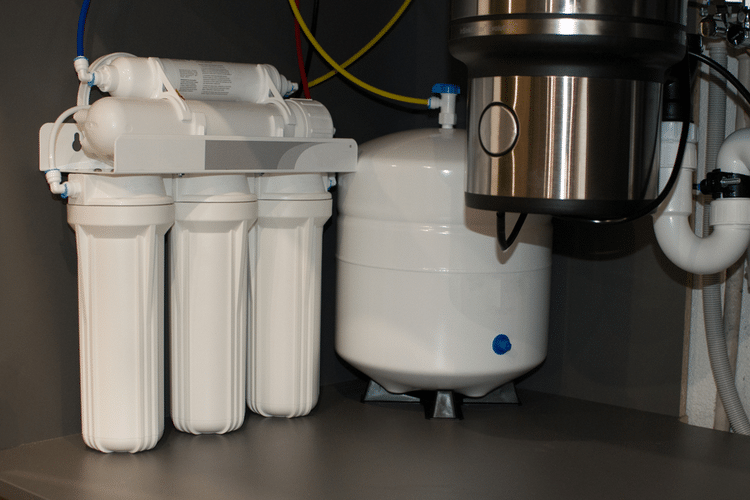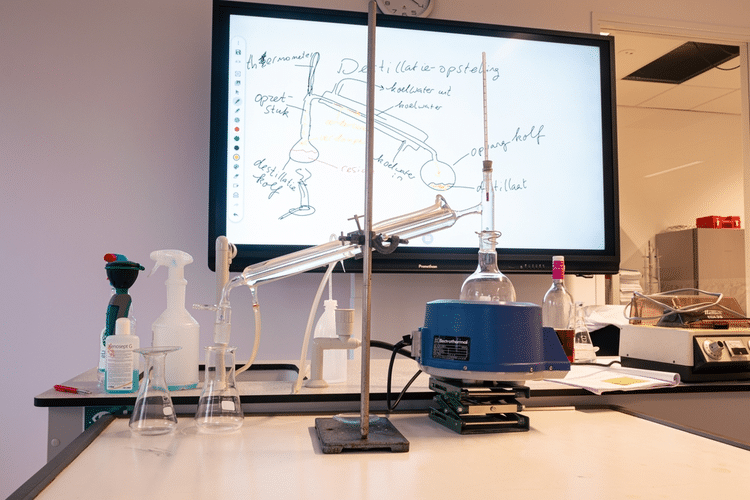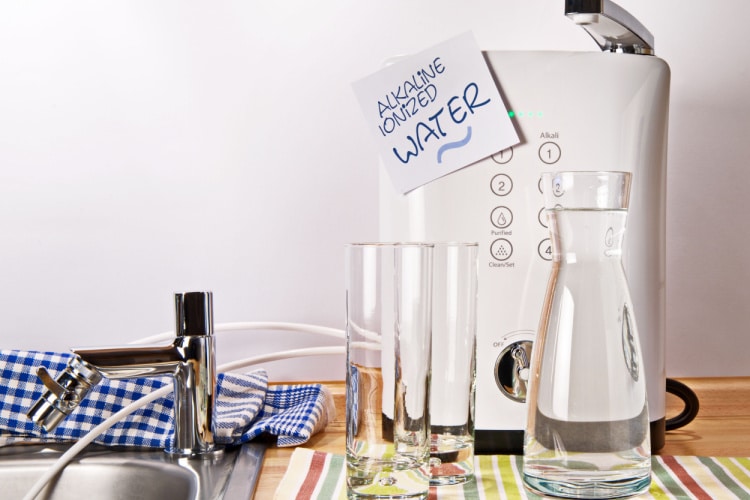Water softeners provide numerous benefits to any household with hard water running through the pipes.
They eliminate the calcium and magnesium minerals that are present in the water, and they help prevent limescale from forming on your dishes, sink, bathtub, faucet, and any areas or surfaces the water touches.
However, many think this comes at the expense of the water tasting saltier. While this is not a pronounced difference, if you’re one of those people and want to remove the salt from your drinking water, then we have several methods that you can try.
Reason for Salty Water
The process water softeners use to get rid of hard minerals in water is called ion exchange. This essentially means that the hard water passes through sodium-rich resin. When the calcium and magnesium ions come in contact with the resin, they are exchanged for sodium ions, and the water is softened since there are no more hard minerals.
Anyone that’s never used a water softener before will probably assume that the water will have an overpowering salty taste since you’re adding sodium to it. The truth is that the sodium ions used to neutralize the mineral ions aren’t enough to change the taste of the water significantly.
However, the water may get a slightly salty taste that’s the result of the sodium increase. While the change is unnoticeable for most people, some find it offputting.
It’s pretty difficult to describe how salty water should and shouldn’t taste in an article, especially since people have different standards and tastes. If you grew up in an area with freshwater reservoirs, then you might detect something. But, if you’ve been drinking hard water most of your life, then it’s very unlikely that you’ll notice the additional sodium ions.
However, if, according to you, the water treated by your softener unit tastes salty, then there are a few things you can do to fix it.
Check the Softener
Before we get into the methods for removing salt from your water, it’s a good idea to check your water softener to ensure it’s running properly.
The only reason why the water has a strong, even overpowering salt taste is if something isn’t working properly inside of the water softener.
You’ll want to check if the regeneration cycle has stopped. Some water softener models don’t stop working even when the regeneration cycle is underway. Using the appliance at that moment causes the water to turn a lot saltier due to the presence of brine in the main tank.
If the cycle hasn’t finished or has stopped for some reason, just manually run it to completion once. The flush cycle at the end should get rid of all of the brine from the main tank, as well as the salty taste from the water.
Additionally, there are several other issues that you can encounter that might turn the water from the softener salty, and you can read all about them in the article that we have on the possible causes and solutions.
Run a check on both the main tank and the brine tank, as we describe in the above-mentioned article. If everything is as it should be, then the salt you notice is the result of the water softener process itself.
Removing Salt From Softener Water
If you want to remove salt from softened water, you’ll need to use a reverse osmosis filter, a water distiller, or a water electrolyzer.
Reverse Osmosis

Reverse osmosis systems use a semipermeable membrane to remove salt from the water. The membrane essentially works as a screen that the water passes through. The holes in this membrane are so small that only water molecules can pass through it.
Once the water has been sieved through the membrane, the hydrogen and oxygen molecules will be passed through the system to be used as drinking water, and all of the salt minerals and other larger molecules will be collected and flushed as wastewater.
Reverse osmosis systems use a very simple but very effective filtration method, which is why most water filtration companies use this system in their devices. This means that they are quite popular, and there are plenty of different models on the market to pick from.
Water Distillation

Water distillation is the method of using a device to heat up the water to the point of becoming vapor and then collecting it. The vaporized water is purified, and the salt and all of the other minerals and contaminants are left at the bottom of the boiling unit.
Distillers are comprised of two units. One is the kettle-like boiling unit that heats up the water, and the other is the container where the vapor collects, condenses, and turns liquid again.
These devices are portable and can fit on pretty much any kitchen surface. They’re also quite a bit cheaper than full-sized whole-house reverse osmosis units.
On the other hand, they’re incredibly slow. Not only do you need to manually insert the water into the boiling unit so it can work, but you’ll also only be able to get around a gallon of pure water after each cycle.
Additionally, reverse osmosis is a much quicker process than distillation, as you don’t have to wait for the water to heat up then turn liquid again.
However, water distillers are great devices for when you just want salt-free drinking water without having to pay a lot of money for whole-house filtration units.
Additionally, as we’ve already said, the water that comes out of the softeners isn’t that noticeably salty. If you run out of drinking water and can’t wait for the long distillation process, you still have perfectly drinkable water from your tap that you can use in the meantime.
Water Electrolysis

A water electrolyzer uses electrodes to pass electricity through several conductors. The water passes through a thin membrane, and the electrical current separates the salt into a separate channel from the water, thereby removing it.
Water electrolyzers are about as effective as reverse osmosis systems, with a similar amount of water waste. They also come in several sizes and at different price points, so you can get one system or the other, and they’d both be a good choice.
However, reverse osmosis systems are by far the more popular choice when it comes to water filtration. This means that there are more models to choose from, more price options, and a better chance that a store near you will have a RO system rather than an electrolyzer.
Other Methods
Aside from distilling your water and running it through a reverse osmosis filter, or an electrolyzer, there’s one last method you can use to remove salt from your softened water.
There are several consumable items that you can get which can get rid of both minerals and contaminants from drinking water. These include items like tablets, drops, straws, and even entire kits that can clean the water for you.
The issue with these items is that they’re much more suitable for camping than as a full-time solution to your salty water problem. They might be cheaper than getting a water filtration system, but you’ll constantly need to restock these items, so their cost will continually go up, meaning that they’re not going to be cheap in the long run.
Conclusion
Reverse osmosis systems and water softeners are a great combo. One removes hard minerals, while the other purifies the water even further and removes any contaminants or strange tastes.
The only problem with this combo is that even the more cost-effective softeners and reverse osmosis systems will cost you at least 2k to buy and more to maintain.
Distillers, on the other hand, are much cheaper but still allow your softener to prevent limescale buildup throughout the house while simply purifying a set amount of drinking water.
The distilling process is a lot slower, and the quantities of water that are purified are limited, but it’s still a very viable option for anyone that doesn’t want to spend too much money.
Electrolyzers also exist as an option. They’re essentially as effective as reverse osmosis systems but not quite as popular. It’s still up to you if you want to give electrolyzers a try, but personally, we’d recommend sticking to the other two methods.
Note: Amazon links here